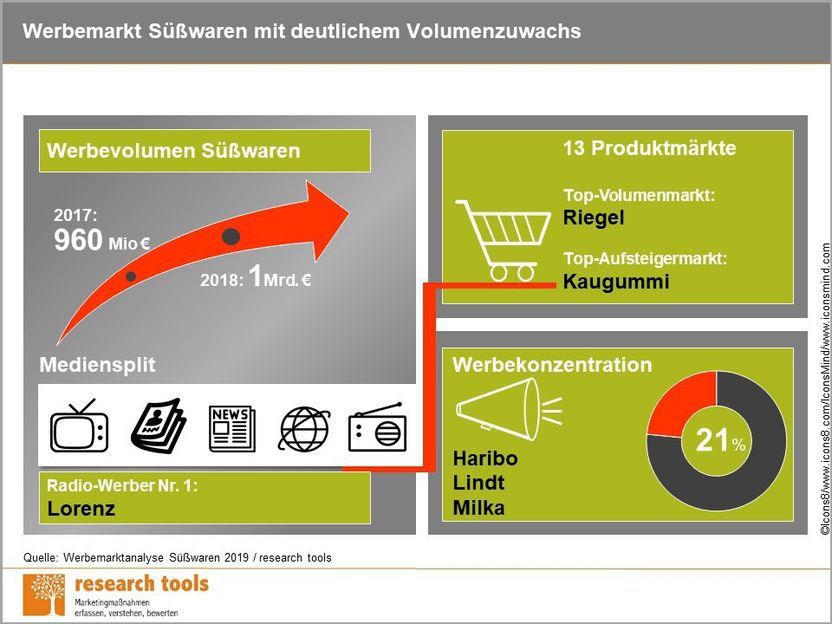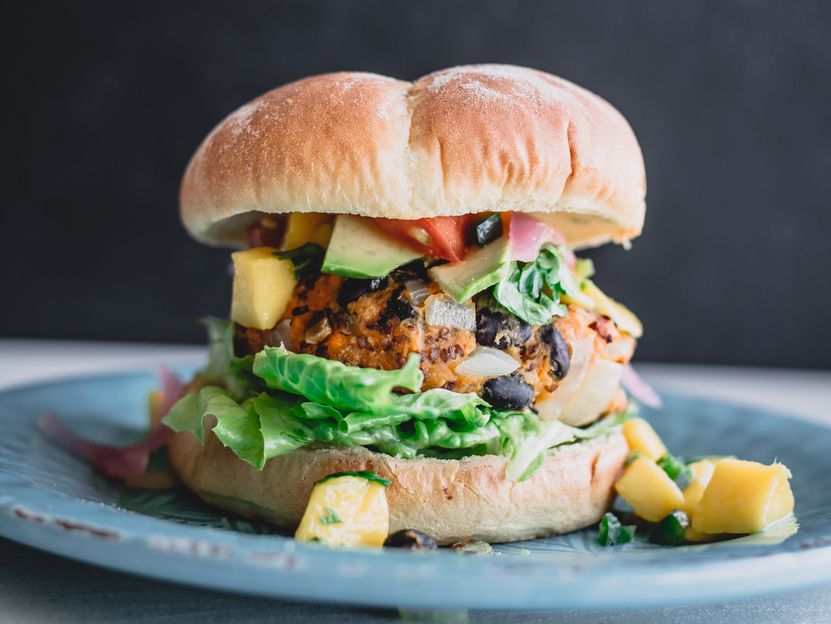Confectionery advertising reaches record high
Only a few newcomers can be found among the 100 strong advertising brands
Advertising activities in the confectionery industry increased for the third time in succession in 2018. With an increase of seven percent, the billion mark was currently broken, and advertising expenditure now amounts to 1.03 billion euros. The submarket with the highest volume is bolt advertising. After an increase of 25 million euros, advertising expenditure for this product category alone reached 185 million euros, a new all-time high. Biscuits are also showing strong growth of 30 percent. The Leibnitz and Oreo brands accounted for most of the growth. Other product markets such as ice cream, nuts & dried fruit, pralines and chocolate bars also peaked within the five years analysed. A slight relaxation can be seen in the media communication for sweets as well as for crisps & savoury biscuits. Advertising expenditure here is five to ten million euros lower than in the previous year.

Süßwarenwerbung erreicht Rekordhoch
research tools
97 percent of media communication is via TV. On average, 100 brands advertise confectionery per month. Over the course of the year, October usually emerges as the month with the strongest advertising. Despite the high overall number of advertising brands, there is a strong concentration in the individual product markets. By far the strongest concentration is in the fruit gum and liquorice markets. Here, three brands represent almost 100 percent of the advertising volume. With other products, such as chocolates or bars, the concentration of the top 3 brands is virtually halved and only reaches almost 50 percent of the advertising volume.
A good two thirds of advertising activities are attributable to confectionery manufacturers. Food manufacturers and conglomerates follow. Bakery and snack manufacturers have a combined advertising share of less than five percent.
In addition to the traditionally strong advertising brands of major confectionery manufacturers such as Ferrero, Haribo, Lindt, Mondelez and Storck, some brands are also newcomers in the current advertising ranking. Ferrero has expanded its portfolio and advertising presence with kinder Ice Cream, XOX is now advertising the Popcorn White Bites. Prolupin introduces vegan sweet lupin products to the advertising market under the name 'Made with Luve'.
About the study:
The "Advertising Market Analysis Confectionery 2019" by research tools examines the advertising expenditures for confectionery in Germany. On 242 pages it provides insight into trends, benchmarks and strategies in 13 submarkets, including seven in detail such as fruit
gums & liquorice, bars, pralines, chocolate bars. In addition to the development of advertising spendings for 200 advertisers, five-year trends are created. An analysis of the communication strategies of ten important advertisers examines quantitative and qualitative parameters and shows significant advertising motives.
Note: This article has been translated using a computer system without human intervention. LUMITOS offers these automatic translations to present a wider range of current news. Since this article has been translated with automatic translation, it is possible that it contains errors in vocabulary, syntax or grammar. The original article in German can be found here.
Most read news
Other news from the department business & finance

Get the food & beverage industry in your inbox
By submitting this form you agree that LUMITOS AG will send you the newsletter(s) selected above by email. Your data will not be passed on to third parties. Your data will be stored and processed in accordance with our data protection regulations. LUMITOS may contact you by email for the purpose of advertising or market and opinion surveys. You can revoke your consent at any time without giving reasons to LUMITOS AG, Ernst-Augustin-Str. 2, 12489 Berlin, Germany or by e-mail at revoke@lumitos.com with effect for the future. In addition, each email contains a link to unsubscribe from the corresponding newsletter.





























































